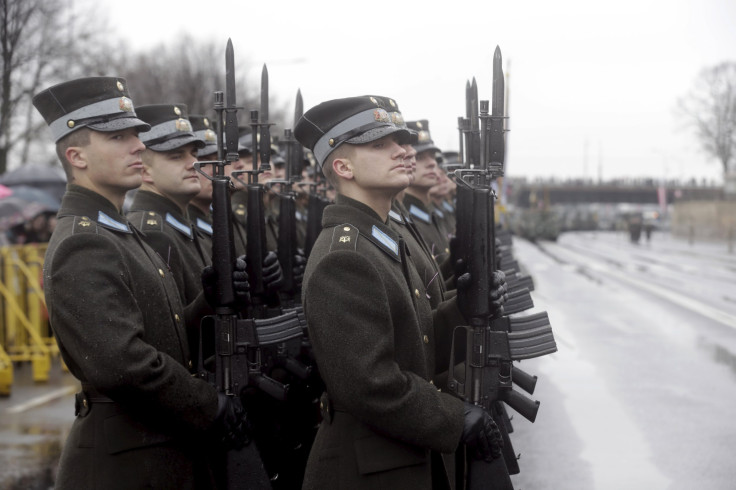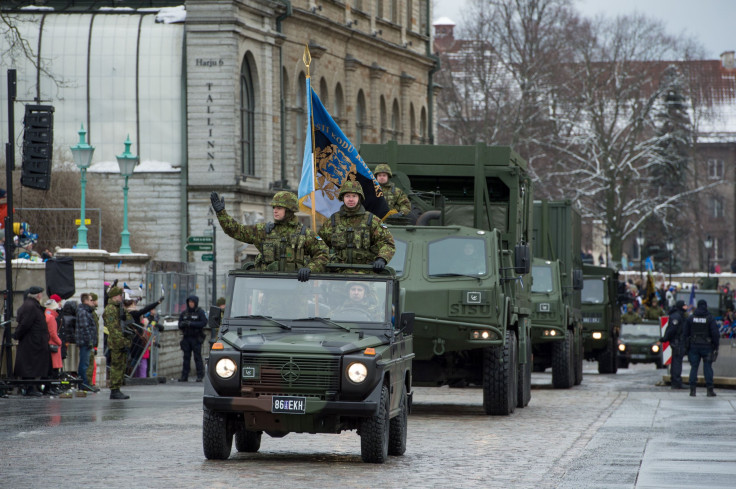Russia-NATO Relations 2016: Amid Aggression, Latvia Calls For More Military Troops

With talk of a new “Cold War” from the Russian government and Russian military aircraft buzzing around the Baltic region, the last two years in the small nation of Latvia have been tense.
But while the world has turned its attention to Russia’s actions in Syria, the three small Baltic nations that border the bear — Latvia, Lithuania and Estonia — have been watching warily. Ahead of NATO’s major summit set for July in Warsaw, Poland, Central and Eastern European members are making their cases for a greater troop presence from the alliance and arguing that now is not the moment to begin conversations with Russia again.
Edgars Rinkēvičs, the Latvian minister for foreign affairs, speaking at the Council on Foreign Relations in New York, raised questions about the portion of NATO's founding treaty that deals with the military and political alliance’s collective defense measures. “We are back to NATO 3.0 and back to core business with Article 5 … particularly in the eastern flank,” he said. “The presence of [NATO] troops in the Baltic states and Poland are not enough for deterrence.”
Tensions in the Baltic region have been high since Russia’s annexation of Crimea from Ukraine in March 2014 and the ensuing conflict in eastern Ukraine that has pitted government troops against Russian-backed rebels. More than 9,000 people have died in the conflict and more than 1.4 million have been displaced as world leaders continue to urge both sides to respect the terms of the Minsk II peace agreement that was drawn up more than a year ago.
Latvia and Lithuania both announced plans over the summer to raise their respective defense spending to 2 percent of each's gross domestic product as the Baltic States keep nervous watch over their large, aggressive neighbor. Rinkēvičs said Latvia had increased its defense spending from 0.9 percent to 1.4 percent this year with the goal of hitting 2 percent in 2018. Europe had missed a major wake-up call with the Georgia-Russia conflict in 2008, and the annexation of Crimea in 2014 was a “game changer” for the entire continent, he added.
“The current [troop] numbers are not enough,” Rinkēvičs said, arguing that NATO must send a strong message of deterrence to its eastern neighbor in order to ensure “security and stability.” Russia has long opposed a greater NATO presence in the region, arguing the alliance encroaches on its spheres of influence.
Hypothetical scenarios depicting the region's security capabilities have presented a scary possibility: If Russian forces decided to invade, it would take them less than three days to reach the outskirts of the Latvian capital of Riga and the Estonian capital of Tallinn, according to a report from the Rand Corporation published earlier this month.
But how far the Kremlin is willing to go in Latvia remains a major question, given Russian involvement in both Syria and Ukraine and the damage to the Russian economy from oil prices that have plummeted to around $30 a barrel.
“It’s [an invasion] probably not likely in the near term,” said Paul Schwartz, a senior associate focused on Russia and Eurasia at the Center for Strategic and International Studies, a think tank based in Washington, D.C. “But something like that can never be ruled out for sure and NATO is being prudent by examining the issue and trying to take measures to shore up their capabilities.”

After conducting its largest military exercises in more than a decade in October, NATO is scheduled to hold a major summit in Warsaw in July to debate troop levels and what adequate deterrence should look, among other topics.
“Warsaw will be telling. I think we will see whether the alliance is prepared to step up and take this issue seriously or whether we are going to continue to rely on the forbearance of our potential adversary for our security,” said David A. Shlapak, co-director of RAND’s Center for Gaming who co-authored the group’s report.
While Rinkēvičs would not reveal what number of troops he would like to see stationed in Latvia, the minister argued the only way to approach relations with Russia was by investing in Article 5 capabilities.
The U.S. has also pivoted back toward Europe with its 2017 defense budget requesting a quadrupling of funding for the region at $3.4 billion. A shipment of more than 5,000 tons of American ammunition arrived in Europe earlier this week, reportedly the largest single shipment to Europe in more than a decade. The move comes as the U.S. Army in Europe increases its exercises along NATO’s eastern flank with a major exercise, Anakonda 2016, scheduled to be held in Poland this June. Latvia, Lithuania and Estonia are also expected to take part in the exercise.
“Under current circumstances … we cannot get to business as usual,” Rinkēvičs said.
© Copyright IBTimes 2024. All rights reserved.





















